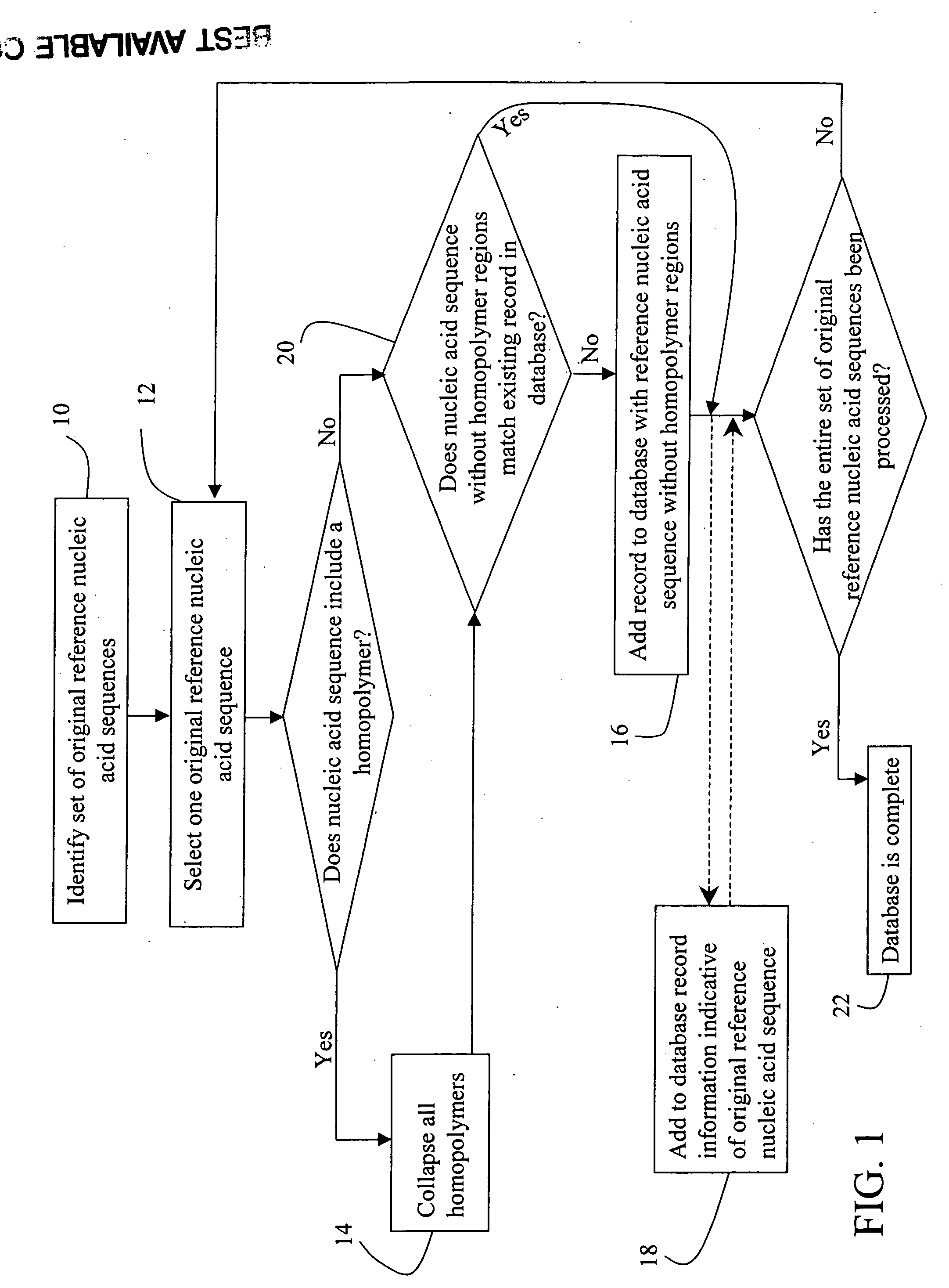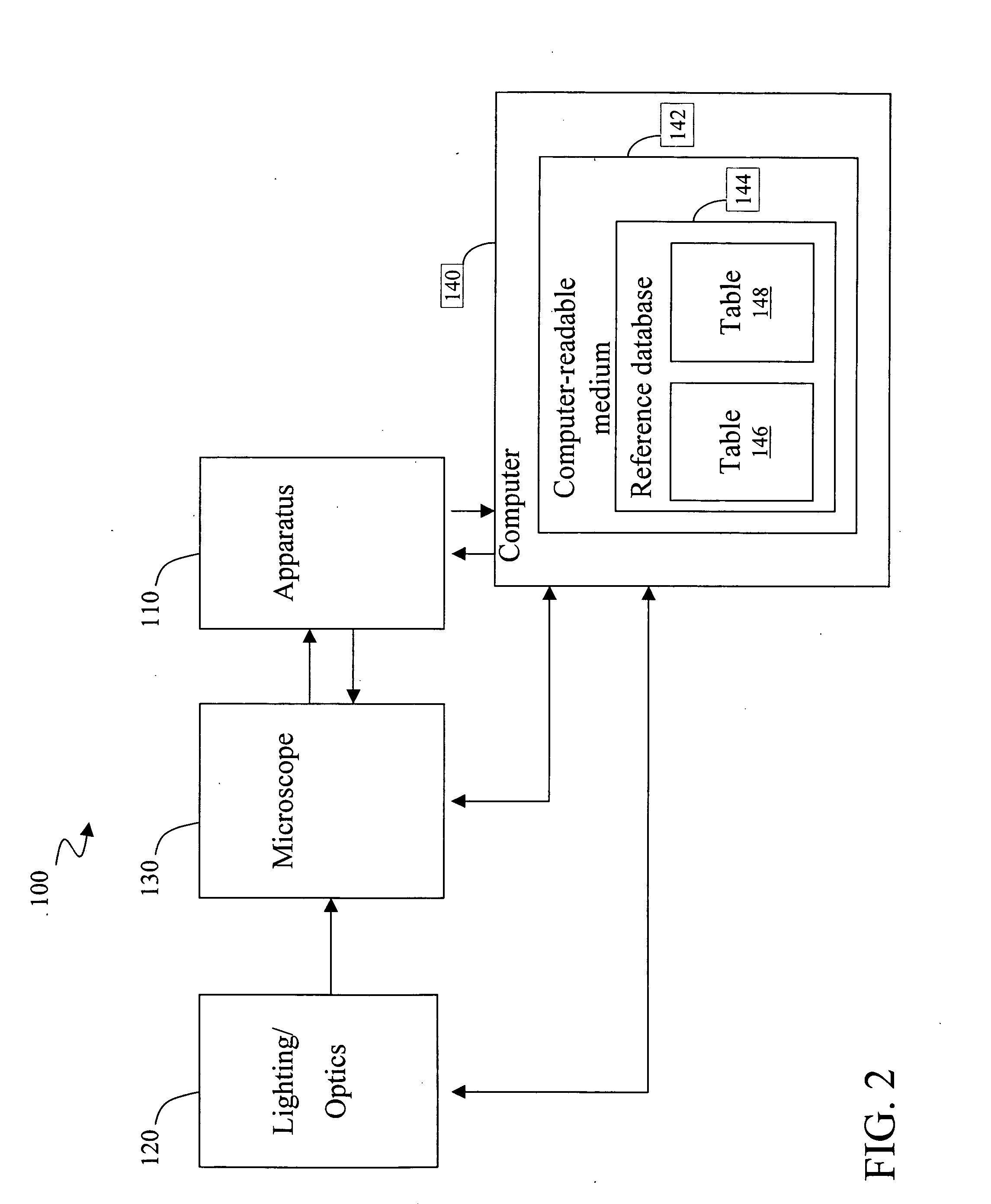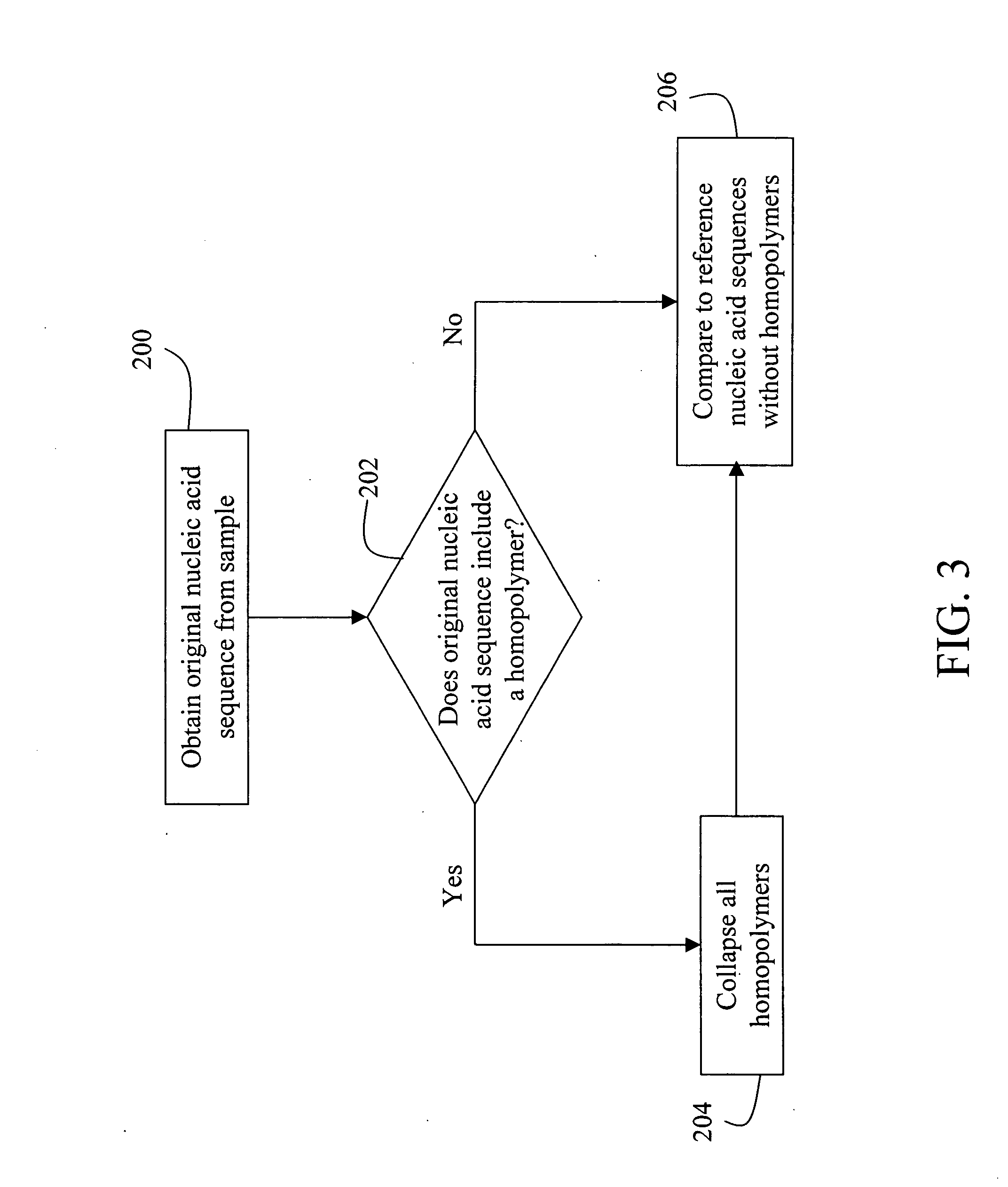Nucleic acid analysis
a nucleic acid and sequence data technology, applied in the field of nucleic acid analysis, can solve the problems of difficult to determine whether a signal indicates nucleotide, lack of useful bulk sequencing techniques for inability to identify subtle or rare nucleotide changes, so as to reduce the number of entries in the database, avoid duplication of entries, and reduce the requirement for computer and/or network resources
- Summary
- Abstract
- Description
- Claims
- Application Information
AI Technical Summary
Benefits of technology
Problems solved by technology
Method used
Image
Examples
example 2
Matching Sequenced Nucleic Acids to a Reduced Reference mRNA Sequence Database
[0056] mRNA molecules isolated from a sample are converted to cDNA sequences by a reverse transcriptase reaction using known methods. The resulting cDNA molecules are sequenced by the Sanger method, by a sequencing-by-synthesis method, or other available DNA sequencing technology. For each molecule sequenced, each nucleotide detected is recorded in a string. A second string is then created to include the first string with all homopolymers collapsed (e.g. AACGT->ACGT). The resulting second strings are compared to the reduced / collapsed data set generated in Example 1 to identify the mRNA transcripts present in the isolate from the sample.
PUM
| Property | Measurement | Unit |
|---|---|---|
| Length | aaaaa | aaaaa |
Abstract
Description
Claims
Application Information
 Login to View More
Login to View More - R&D
- Intellectual Property
- Life Sciences
- Materials
- Tech Scout
- Unparalleled Data Quality
- Higher Quality Content
- 60% Fewer Hallucinations
Browse by: Latest US Patents, China's latest patents, Technical Efficacy Thesaurus, Application Domain, Technology Topic, Popular Technical Reports.
© 2025 PatSnap. All rights reserved.Legal|Privacy policy|Modern Slavery Act Transparency Statement|Sitemap|About US| Contact US: help@patsnap.com



